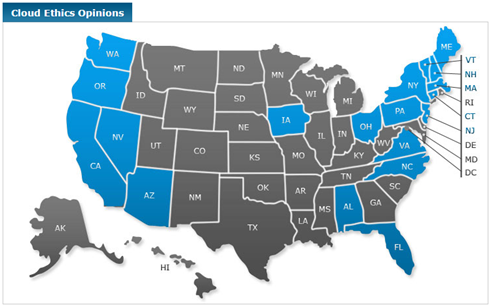Court Finds No Discovery Abuses by Defendant that Produced MSG Instead of TIFF Files: eDiscovery Case Law

Our hearts and prayers go out to the people of Paris in this difficult time. Having said that, we still have a blog to do each day, so here it is…
In Feist v. Paxfire, Inc., 11-CV-5436 (LGS)(RLE) (S.D.N.Y. Oct. 26, 2015), New York Magistrate Judge Ronald L. Ellis denied the plaintiff’s request for reimbursement of costs and expenses related to document production, finding that the plaintiff had made no showing of significant discovery abuses by the defendant, and had not demonstrated that the defendant engaged in intentionally burdensome production.
Case Background
In this case, the plaintiff claimed that the defendant ignored her request for emails to be produced in TIFF format and also did not properly object to the requested form pursuant to the Parties’ 26(f) Report, and Federal Rule of Civil Procedure 34. She also claimed that the defendant failed to use a vendor for its overall document collection, which resulted in duplication and discovery delays. The defendant countered that it produced emails in the native format used by the defendant, which was in the form of Outlook .msg message files and consistent with the plaintiff’s request and also purchased specialized software from, and consulted with, a vendor.
The plaintiff also argued that the defendant intentionally overburdened Plaintiff’s counsel with duplicative document production – the original production in 2012 was provided to the plaintiff in a Dropbox folder, but an attorney for the plaintiff deleted some of the information on Dropbox, causing the Defendants to re-produce the deleted ESI with a supplemental production. As a result of the disputes, the plaintiff requested for the defendant to award her costs and expenses related to the defendant’s production.
Judge’s Ruling
Taking on the issue of the form of production first, Judge Ellis stated: “The Court finds that Feist’s argument regarding the format of email production is meritless. Feist claims that Paxfire did not properly object to the TIFF format. However, in an email dated March 9, 2015, it is clear that the Parties did engage in ongoing discussions about the form in which emails should be produced. Following communications with Paxfire, Feist was to speak with the Litigation Support Department about ‘production of documents in .pst form.’ This suggests that Paxfire did object by offering to produce documents in a form other than TIFF. To the extent that documents were produced in .msg form, as opposed to .pst form, the Court finds credible Paxfire’s assertion that the two formats are easily convertible from one form to the other, and that .msg format contains more metadata than TIFF format. There has been no evidence to establish that .msg form imposed considerable costs on Feist’s part.”
As for the plaintiff’s claims regarding the defendant’s supposed lack of use of a vendor, Judge Ellis noted “Although Paxfire did not use a vendor in a way expected by Feist, the Court considers the manner in which Paxfire did use a vendor to be a non-issue.” Regarding the defendant’s duplicate production, Judge Ellis indicated that the plaintiff’s “deletions caused Paxfire to reproduce everything it originally produced in 2012, in addition to new material Paxfire believed was relevant to the 2015 production, because Feist stated that Paxfire had failed to produce certain documents. To the extent that Paxfire duplicated documents from 2012, the Court holds Feist responsible for such duplication. Feist stated that Paxfire ignored Feist’s suggestion that Paxfire restore the deleted Dropbox files, and instead offered to send Feist a hard drive. On the contrary, in an email to Paxfire’s counsel dated April 14, 2015, Clark stated that Plaintiff’s counsel was attempting to restore files unsuccessfully, and that she understood ‘you are sending us a hard drive with the materials, so we don’t need to worry about drop box [sic]…’”
Finding the plaintiff’s contentions to be without merit, Judge Ellis denied her request for reimbursement of costs and expenses related to document production.
So, what do you think? Have you ever been associated with a case where the requesting party objected to native format and preferred TIFF instead? Please share any comments you might have or if you’d like to know more about a particular topic.
Disclaimer: The views represented herein are exclusively the views of the author, and do not necessarily represent the views held by CloudNine. eDiscovery Daily is made available by CloudNine solely for educational purposes to provide general information about general eDiscovery principles and not to provide specific legal advice applicable to any particular circumstance. eDiscovery Daily should not be used as a substitute for competent legal advice from a lawyer you have retained and who has agreed to represent you.








